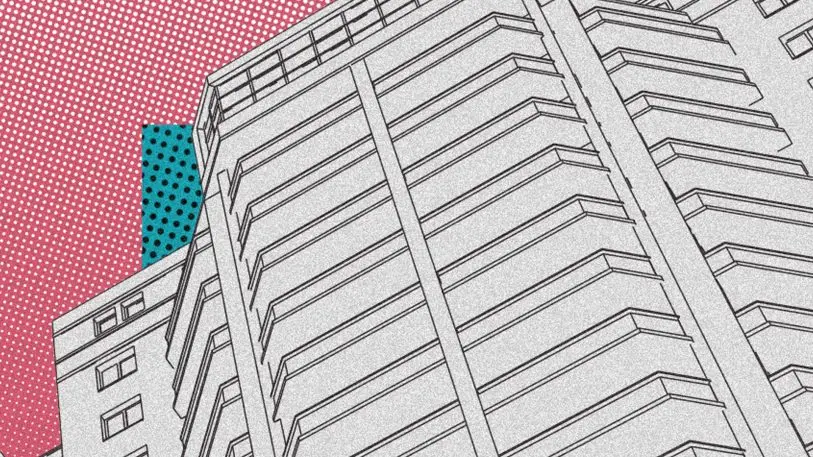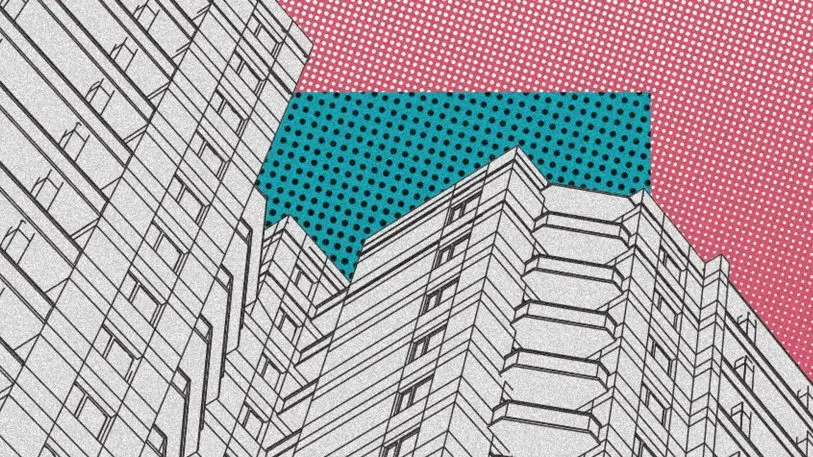During harsh Chicago winters when he was homeless, Glenn Baker used to spend as many as 20 nights each month in local emergency rooms–both because of his chronic medical conditions and, at times, just to get out of the cold. But for the last year and a half, Baker has lived in his own apartment, paid for in part by the University of Illinois Hospital. His health has improved, and when he visits the hospital now, it’s usually just to say hello.
In a pilot program, the hospital partnered with the nonprofit Center for Housing and Health to provide supportive housing for 26 ER “super users” like Baker beginning in 2015. After seeing the program’s success–on average, healthcare costs per patient dropped 18% each month–the hospital now plans to pay to house 25 more people. It is also working with other hospitals to help them make the same investment.
“We think a combination of things makes a very compelling argument that other hospitals need to do very similar work,” says Stephen Brown, director of preventive emergency medicine at the hospital and of its Better Health Through Housing initiative.

The Center for Housing and Health had studied the impact that supportive housing could have for homeless people leaving hospitals in the past, and saw benefits for patients as well as cost savings; it’s that same logic that inspired a bill proposed in the Hawaii state legislature last year to allow medical practitioners to prescribe housing for the homeless, just as they would medication. A member of the nonprofit’s board worked at the hospital and helped start conversations between the two organizations.
For the hospital, which serves a large number of people living in poverty in Chicago, the program made sense partly because of its growing focus on community health, rather than just the individual care of patients. “In the past, I know this sounds a little stunning, but [hospitals] really weren’t all that concerned about the health of the residents that they serve,” says Brown. “They were really just focused on delivering healthcare.”
The Affordable Care Act, which requires nonprofit hospitals to submit an assessment of community health every three years, helped shift that perspective by bringing more attention to the impact that factors like housing, transportation, and employment have on health.
Being homeless, unsurprisingly, is terrible for health. People without a permanent place to live have a life expectancy that’s 26 years less than the average American’s. For some, a health crisis might be the reason that they lose a job and become homeless; once homeless, managing chronic diseases and taking medicine at the right time (or at all) becomes even more challenging. Living on the street increases the risk that someone will be assaulted. Among chronically homeless people, many suffer from mental illness and addiction. Of the 26 people initially housed through the hospital’s program, four people were so ill that they died, and one entered hospice care.
But if the housing intervention can happen early enough, it could dramatically improve health. Brown says that while homelessness is a serious health condition, it isn’t typically seen that way. If someone came to the ER with symptoms of a brain tumor, “we would take extraordinary measures to extend that person’s life, knowing that they had a very high mortality rate,” he says. “Someone with equal mortality–just based on the condition of being homeless, it has very similar risk ratios to some of the more virulent forms of cancer–we discharge them. It’s just one of the weird things that happens in healthcare.”

By helping someone stay healthier, providing housing can also save the healthcare system money. In the current program, the U.S. Department of Housing and Human Development pays for part of the cost of housing, and the hospital pays $1,000 per month per person to cover the supportive services that go along with the apartment. In comparison, a single day in the ER can cost $3,000. That cost usually isn’t borne by the hospital alone–it might be largely covered by Medicaid via managed care organizations, for example. The hospital is currently in talks with those organizations to make the case that it makes financial sense for them to invest in housing as well.
In other cities, hospitals and healthcare organizations are also investing in housing for the homeless. In Portland, Oregon, five hospitals and a nonprofit health plan are donating $21.5 million to build three new housing developments for homeless and low-income people. In Orlando, Florida Hospital donated money to help house the homeless and partnered with a local organization that provides permanent housing. Others, like SBH Health System in the Bronx, are investing in affordable housing (a new mixed-use development across from the hospital will include 133 affordable apartments, along with a yoga studio and rooftop farm, all meant to improve health).
For advocates for the homeless, the growing support from the healthcare industry is not only helping in a financial sense, but helping change the narrative about homelessness. “The homeless community is strong and we’re loud, but the healthcare sector is much larger,” says Peter Toepfer, executive director for the Center for Housing and Health. “People listen to people who work in healthcare, whether they’re doctors or hospital administrators in a way that is different than people who are in the human services sector.”
In Chicago, as other hospitals also begin to help fund supportive housing in existing apartments throughout the city, the next step may be to invest in new housing. “We already do not have enough,” Toepfer says. “So while there’s a lot of promising outcomes that we can demonstrate from this type of project, it’s really meant to be a springboard for a larger initiative that can create the volume of housing that we need.”
Recognize your brand’s excellence by applying to this year’s Brands That Matter Awards before the early-rate deadline, May 3.
